When TREK launched the Supercaliber last year, we took one look at the specs and the photos and the videos and immediately decided it was made for TREK’s XCO World Cup racing team of Jolanda Neff, Emily Batty and Anton Cooper. When marathon bikes are moving towards more suspension travel, 60mm at the rear is more like forgiveness than suspension, surely? We spent a few weeks riding both the TREK Supercaliber 9.8 and the 120mm-travel TREK Top Fuel 9.8 to see which is the better bike for South Africans.
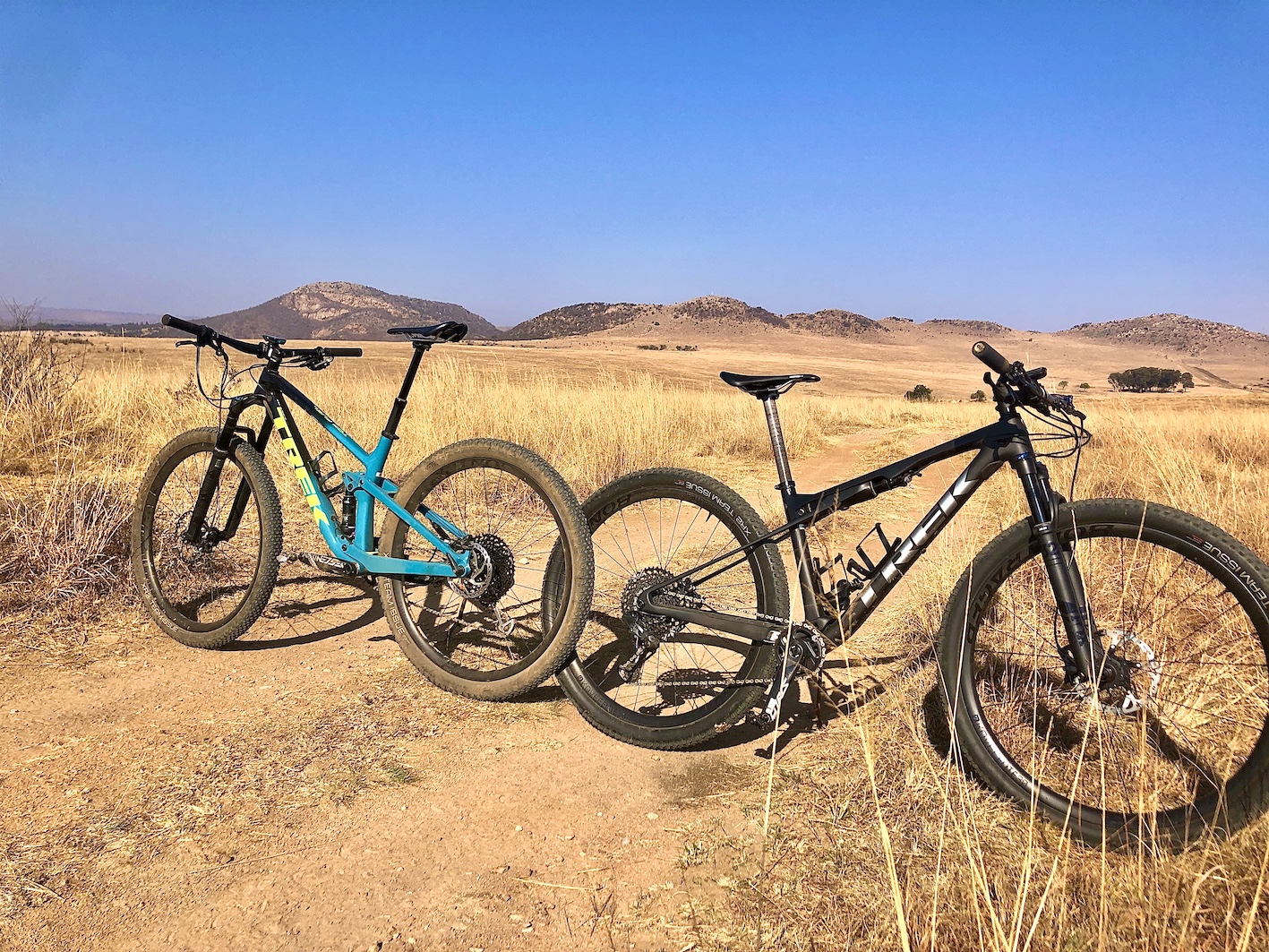
Top Fuel 9.8 vs Supercaliber 9.8 in the dry winter Highveld.
Our three-rider bike-test team rode both bikes on a range of trails, including Thaba Trails (steep and rocky), Huddle Park (flattish and manicured), Hennops (longer climbs and descents), Cradle Moon Red (twisty and rough), The Spruit (flattish and manicured), Hobby Park (twisty and firm), Taroko Trails (rolling and twisty) and Wolwespruit (twisty and steep).
A wide variety of popular Gauteng trails gave us a good perspective for each bike.
Climbing
When it came to climbing, the snappiness of the Supercaliber was noticeable. It’s definitely one of the best-climbing bikes we have ridden in terms of light weight and responsiveness. The Top Fuel is a comfortable climber though. And for many, comfortable climbing is more important than fast climbing.
Descending
As expected, the Top Fuel aced the descents. It delivered bucket loads of confidence on any descent. The dropper seatpost never faltered and the geometry combined with the wide bar, Fox suspension and solid Bontrager wheelset made every downhill ‘ownable’. The Supercaliber descended as well as you’d expect a bike without a dropper post to descend, but it had a very secure feel at the front. One of our testers recorded a Strava PR on the full Delta Park descent (no tailwind) on the Supercaliber. This descent is all hardpack singletrack with small jumps and berms.
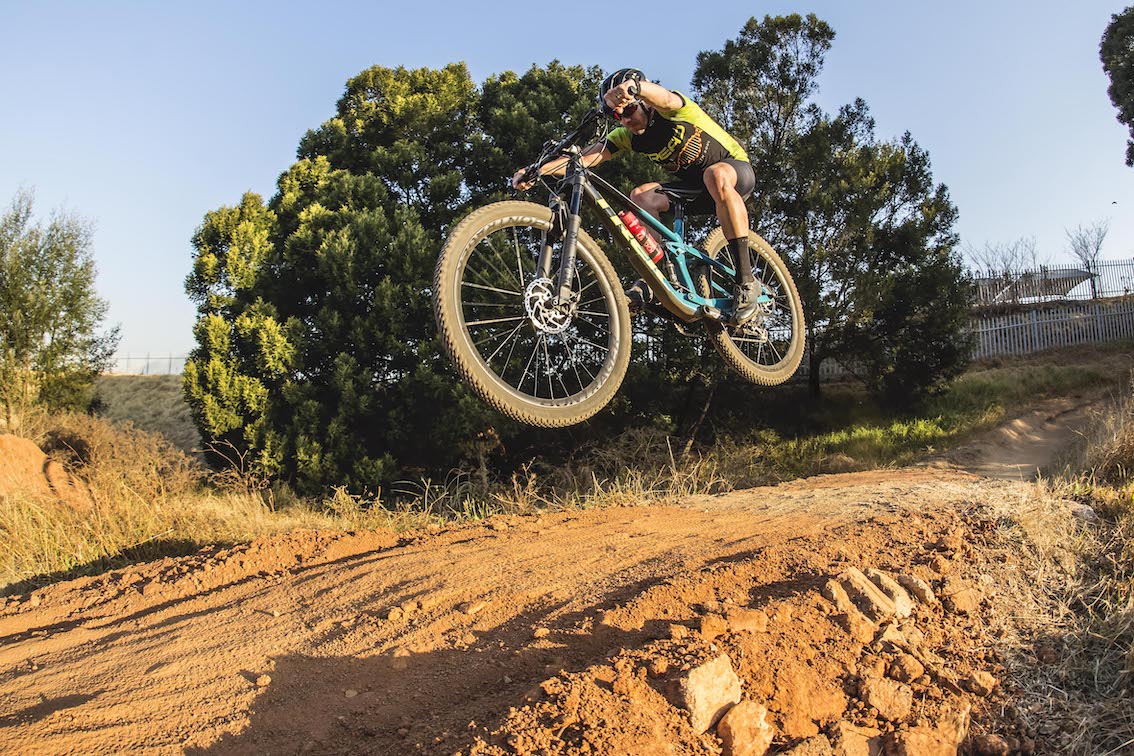
The Top Fuel was seriously impressive with handling and descents.
Handling
We have created a separate category for Handling because although it’s a part of both descending and cornering it really needs to be discussed separately. Those moments before a turn, between a berm and a jump or a jump into berm, or over loose stones on an off-camber slope, or angled ruts at speed or, well, you get our drift… That’s when you find out about how a bike handles. It’s the between-obstacle moments where you and the bike need to be connected. Where you need full trust in the bike.
After much discussion at our pre-review notes-comparison meeting, all three testers decided that both the Supercaliber and the Top Fuel were unflinching. And this takes into account that the Supercaliber doesn’t have a dropper seatpost. Yoh! Both these bikes just handle incredibly well.
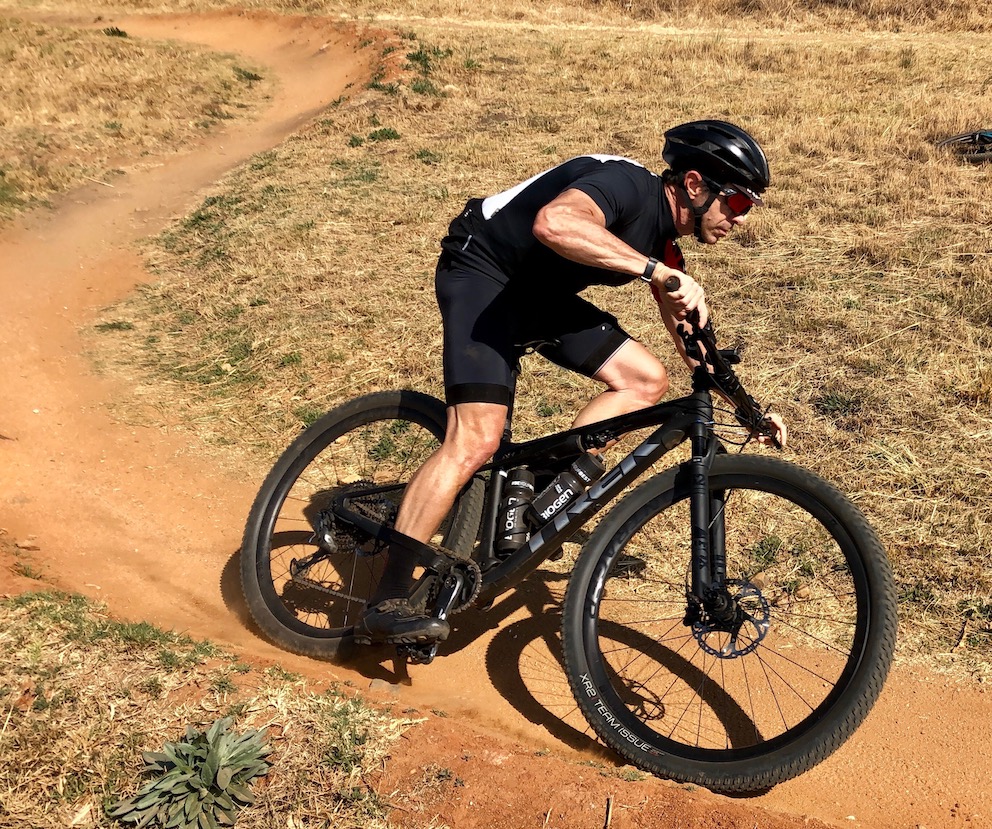
The Supercaliber was swift through corners.
Cornering
Tyre type and tyre pressure are critical in ensuring a bike corners with confidence. But there’s more to it. Frame geometry, handlebar/stem and fork settings also play a big part. And of course, the rider’s ability. We threw these two bikes into hundreds and hundreds of corners. Flat, fast turns, tight turns, berms, off-camber bends, sketchy switchbacks, pretty much every kind of corner type there is. The Top Fuel, which was fitted with Bontrager XR3 2.4-inch tyres, was simply flawless. It never left us feeling unsure or doubtful at all in any corners. A truly stable, sure, confidence-inspiring bike to take into any corner at any pace.
The Supercaliber was fitted with the Bontrager XR2 Team Issue 2.2 tyres. These were faster-rolling and slightly narrower than those on the Top Fuel, offering a lighter weight too.
Cornering on the Supercaliber wasn’t far off the Top Fuel. The occasional cornering moment gave us just a bit of a confidence knock, but each time it was momentary and didn’t linger in our minds… Still, a great cornering bike, the Supercaliber.
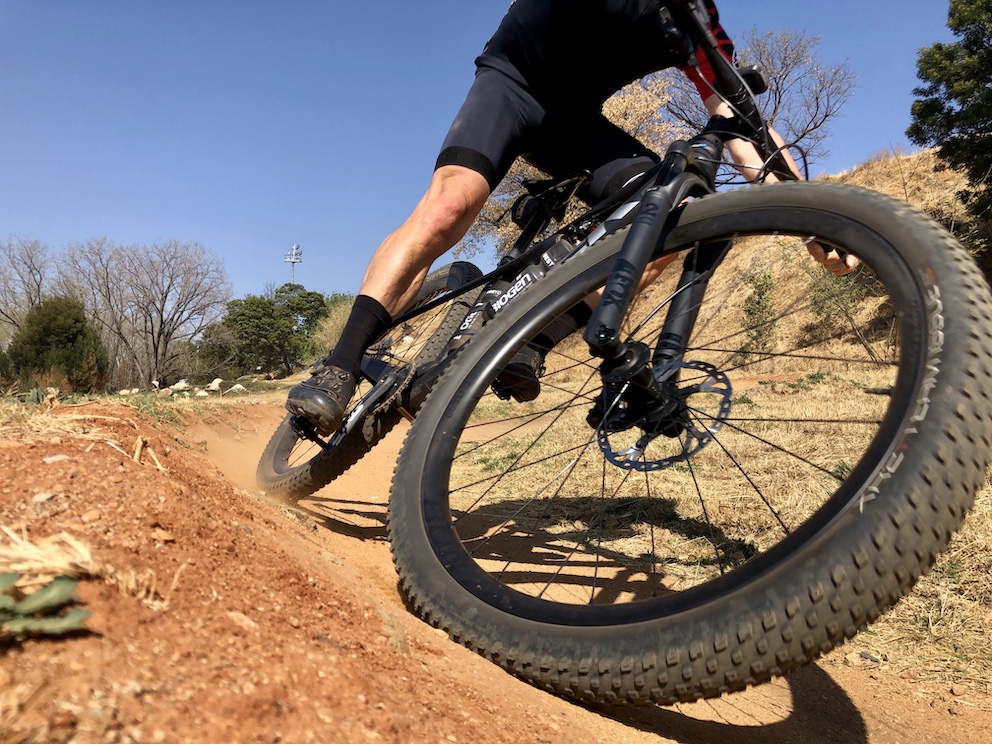
We love the Bontrager Kovee Elite 30 Wheels.
Comfort
Comfort may not always be a priority if you’re fit and fast and skilled. But if you’re lacking in any of those, you’re going to appreciate comfort. And comfort isn’t just saddle comfort, it’s your position when you’re seated and it becomes more essential the longer you spend on the bike. One our testers took each of these bikes on a Mini Munga – a 100km/1000m ascent mostly gravel road challenge. The Top Fuel was, as expected more comfortable than the Supercaliber on long rides. It was also a more comfortable bike to climb. Our female tester set a Strava PR on a local climb on the Top Fuel, without intentionally putting in a big effort. There was no tailwind. We could only attribute it to her feeling comfortable on the bike.
Looks
We have to include looks into any bike test. Obviously this is subjective, but a bike needs to look good in terms of silhouette, styling, proportion, components. Colour doesn’t always matter unless it’s a really crappy colour. We really liked the look of both bikes a lot.

TREK Top Fuel 9.8

TREK Supercaliber 9.8
HOW THEY MATCHED UP
| TREK Top Fuel 9.8 | TREK Supercaliber 9.8 | |
| Climbing | 9 | 10 |
| Descending | 10 | 8 |
| Handling | 10 | 10 |
| Cornering | 10 | 9 |
| Comfort | 9 | 7 |
| Looks | 9 | 9 |
| Total | 57/60 | 53/60 |
Those wheels though!
Both bikes came with SRAM Eagle GX 1×12 drivetrains. Some may feel a higher-level drivetrain would be more appropriate on a R100K bike – and that’s not unreasonable at all. An XX1 drivetrain would likely be more longer-wearing. But the GX worked without a glitch on both bikes and that’s mostly what you want from a drivetrain.
What did blow us away though were the wheels! Both bikes come with Bontrager Kovee Elite 30 Wheels. They’re OCLV carbon rims with 29mm internal width and 36mm external width. The hubs are Bontrager’s highly rated Rapid Drive, which offer ridiculously rapid engagement.
A good set of wheels can make a big different to the handling and cornering of a bike. We reckon these are among the best wheels we have ever ridden. And we have ridden many…
At 1715g for the pair, they’re not the lightest, but they are seriously strong and responsive and complement both bikes way more than a more expensive drivetrain would.
Medium/Large sizing
TREK has hit a sweet spot with its Medium/Large size option. Both the Top Fuel and Supercaliber come in Small, Medium, Medium/Large, Large and Extra Large. For the fairly high percentage of riders on the cusp of a Medium and Large, this ensures you don’t have to compromise on fit. The two bikes we tested were both Medium.
Knock Block
The Knock Block is a TREK feature which prevents your handlebars (and fork) from turning too far and damaging your top tube. It’s on both the Supercaliber and the Top Fuel and certainly has its benefits. But when you’re accustomed to not having it, it can be a bit distracting until you get used to it.
Brakes
Both bikes come with Shimano hydraulic disc brakes – SLX on the Top Fuel and XT on the Supercaliber. They both have 160mm rear rotors and 180mm up front for optimal stopping power. We had one issue on the Top Fuel where one of the rear pads broke off. It wasn’t a TREK issue and it’s not a common Shimano issue either. So much so that Shimano reimbursed us for the pair that we bought as to replace the damaged pair.
Top Fuel 9.8
The dropper seatpost
The Top Fuel comes standard with a dropper seatpost, which, combined with the bike’s trail geometry (67.5-68-degree headtube angle – Hi/Lo settings), generous standover space and 120mm travel front and rear, encouraged us to take this bike over every jump line in Joburg. And Pretoria. With confidence. And one of our testers took it to Giba Gorge and Cascades MTB Park, in KwaZulu-Natal where he says it more than held its own against bikes more suited to gravity lines and big jumps. It’s a Bontrager Line Elite Dropper with 150mm movement (130mm on the Small and 170mm on the Large and Extra Large).
The unexpected Fox/Rock Shox liaison
While the Top Fuel 9.8 comes with Fox fork and rear shock, the simultaneous suspension adjustment is via a Rock Shox TwistLoc remote, which we really liked a lot! We’re already familiar with – and highly rate – the 120mm-travel Fox Performance 34 fork, which combined well with the 120mm-travel Fox Performance Float two-position shock to confirm the Top Fuel’s much-mentioned allrounder label.
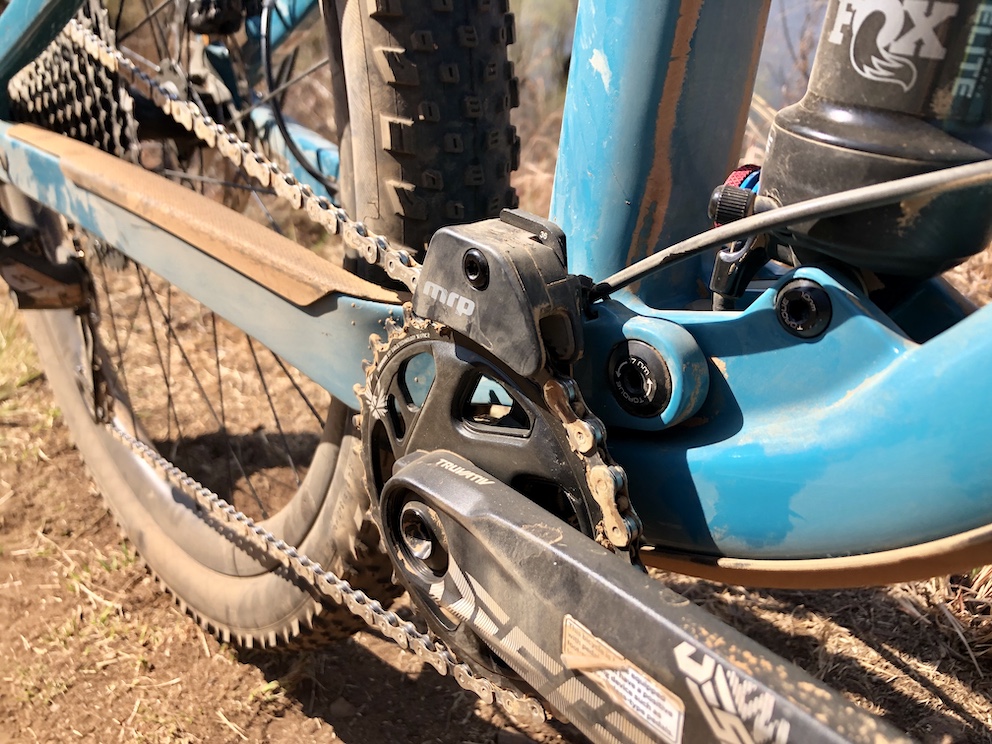
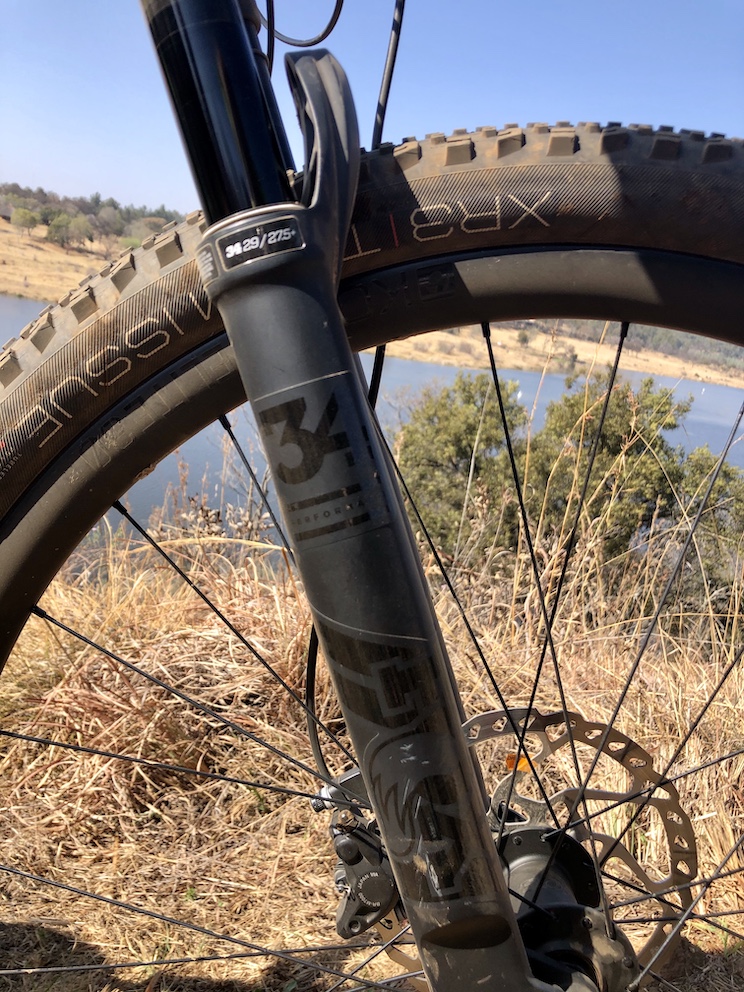
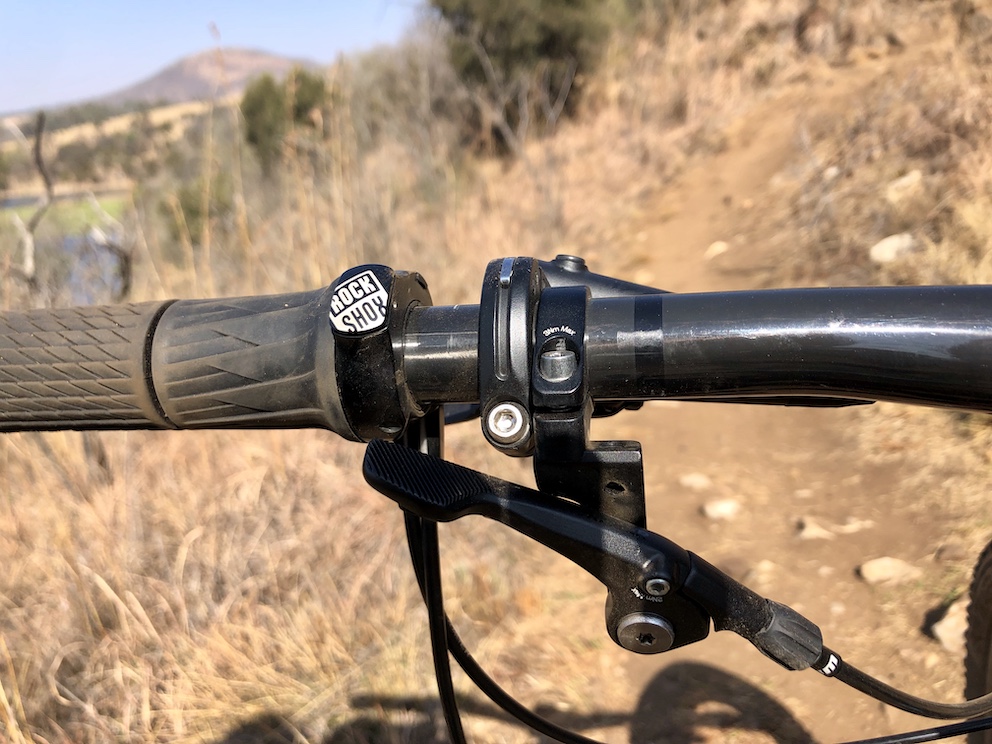
MAX COMPATIBLE FORK TRAVEL: 130mm
CLAIMED WEIGHT: 11.80kg (without pedals, with sealant)
RIDER WEIGHT LIMIT: 136kg (bike and rider combined)
PRICE: R109 999
Summary
The TREK Top Fuel 9.8 has ‘allrounder’ firmly in its DNA. The handling is simply superb on all surfaces, it climbs comfortably and it descends with supreme confidence and control. It’s ideal for the rider that likes to race, but loves to ride – everything.
Supercaliber 9.8
The little rear shock
The new frame design of the Supercaliber sees the inclusion of the new IsoStrut rear shock that’s only really visible from below. It’s neatly – actually beautifully – integrated into the toptube and, combined with slim seatstays, eliminates the need for a rear pivot to give 60mm of travel. You may wonder if 60mm is even worth it. Isn’t it close to a hardtail or TREK’s Procaliber with its Isospeed Decoupler?
No, it’s not. It has the feel of a full-suspension bike, but with a very light, snappy rear end that’s most evident on climbs. Undoubtedly one of the fastest full-sus bikes we’ve ridden uphill on! At 10.46kg it’s not the lightest full-sus XC/Marathon bike out there, but we’ve never been pedantic about bike weight because we know that performance isn’t reliant only on weight – it’s the result of a combination of factors.

The Supercaliber fits two full-size water bottles inside the frame, which, in South Africa, is important to many…
Suspension
The fork is a Fox Performance 32 Stepcast, with 100mm of travel, while the rear shock is a proprietary TREK IsoStrut Fox Performance with 60mm of travel. A Fox remote lever delivers simultaneous lockout/open release. We probably shouldn’t have, but we dropped the seatpost and sent it down a couple of jump lines. You know, just to see how the suspension would respond. To be fair, some of the modern XC course aren’t much different to what we covered and it performed without so much as a wince over big hits.
There was some noticeable absorption of ‘trail chatter’ through the slim seatstays when locked out (from a vertical perspective), but this didn’t affect standing and accelerating, well not that we could notice anyway.
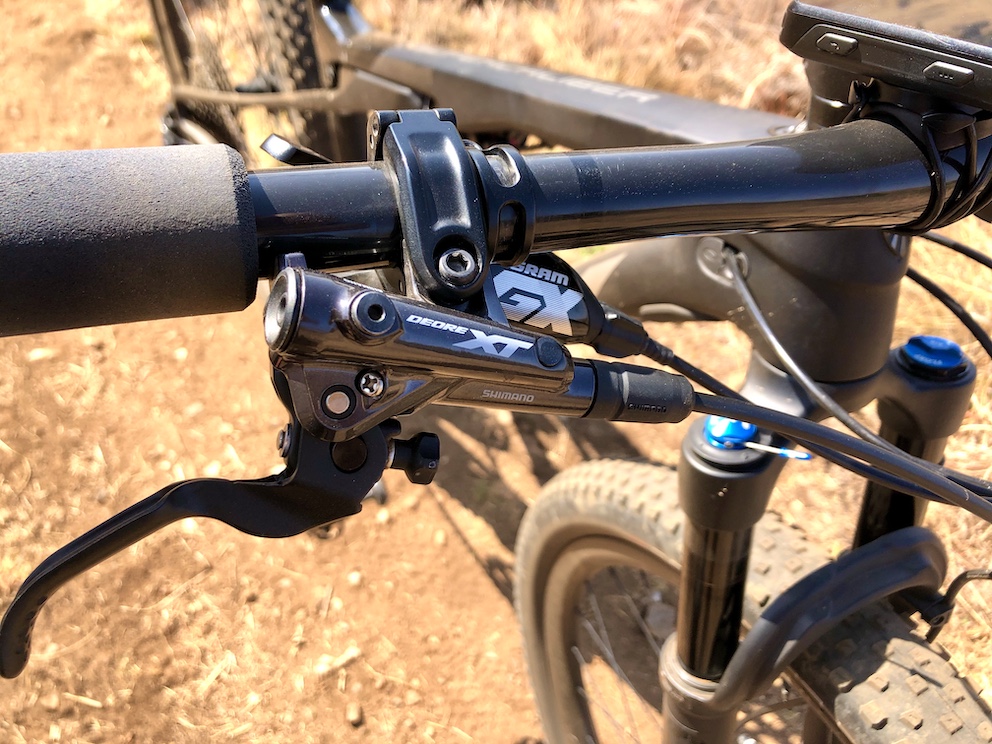
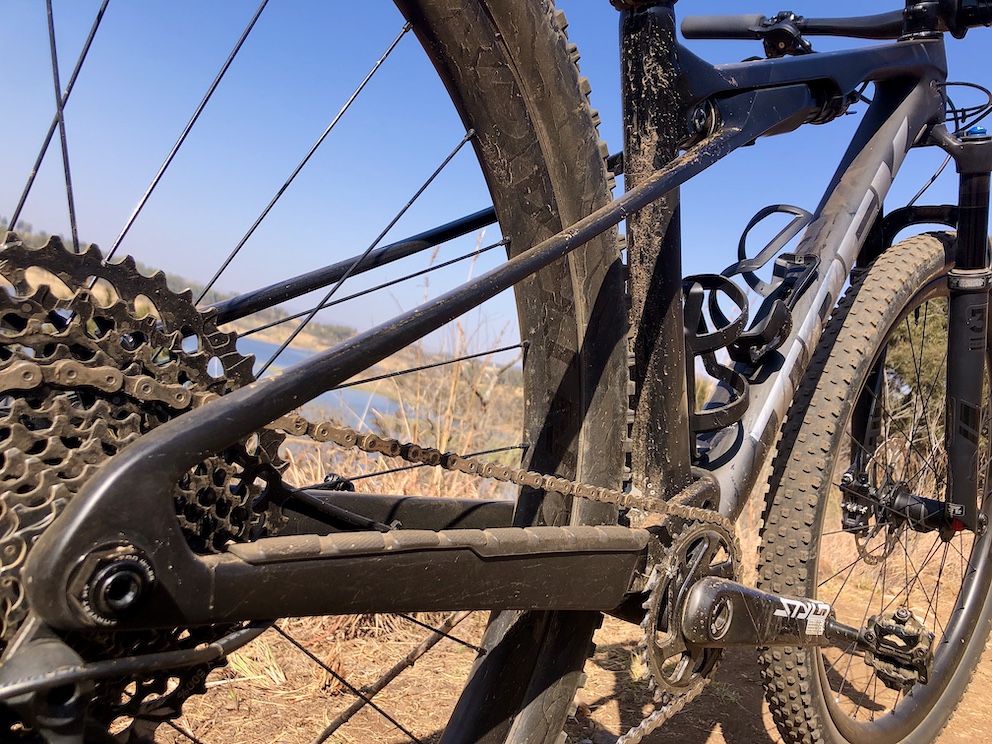

MAX COMPATIBLE FORK TRAVEL: 120mm
CLAIMED WEIGHT: 10.46kg (without pedals, with sealant)
RIDER WEIGHT LIMIT: 136kg (bike and rider combined).
PRICE: R109 999
Summary
The TREK Supercaliber 9.8 is unashamedly made to go fast. It’s a phenomenal climber and handles superbly. It’s ideal for the rider that’s physically conditioned and highly competitive, preferring a fast time to a good time…


